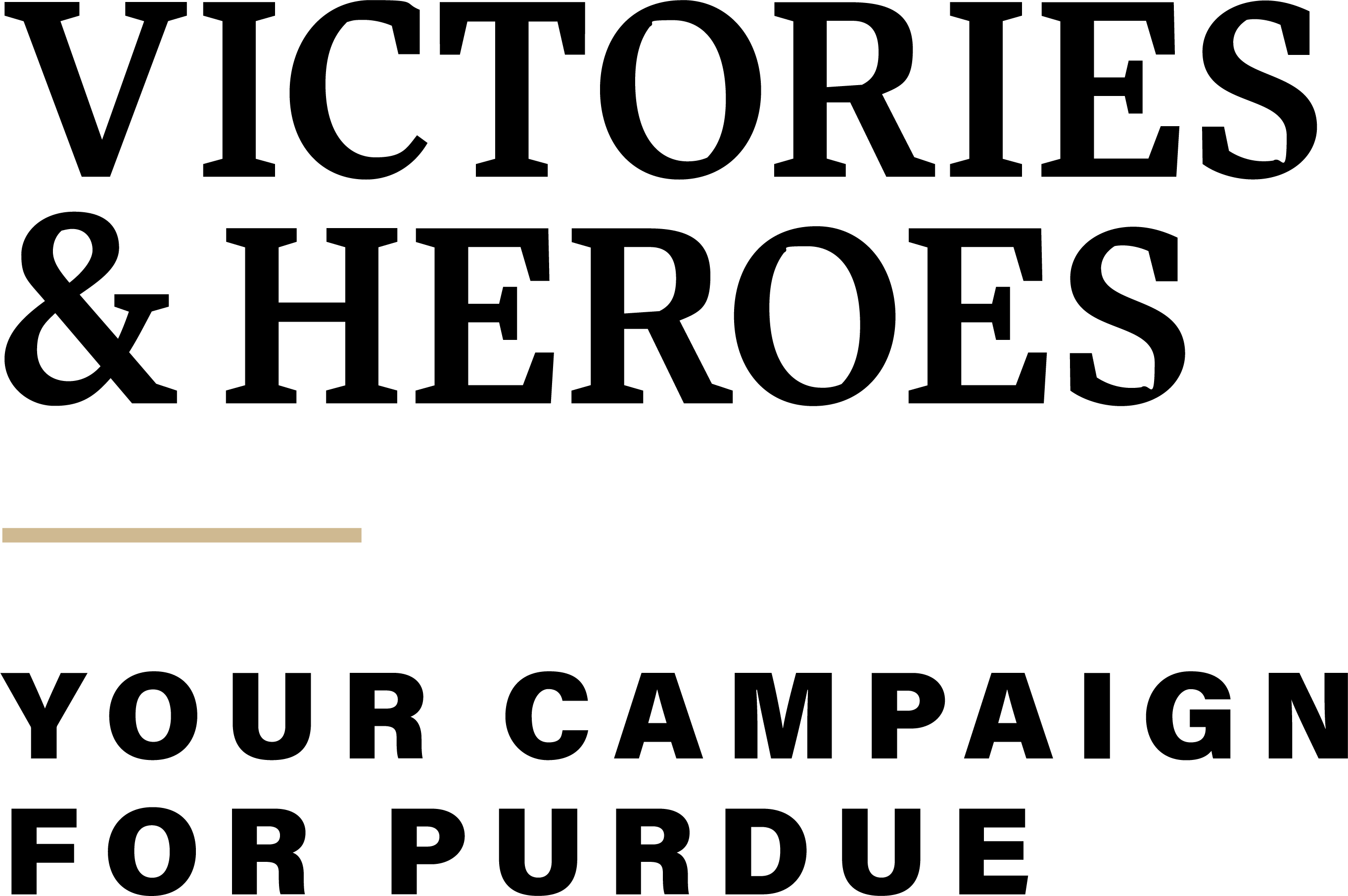OUT OF THE SILENCE
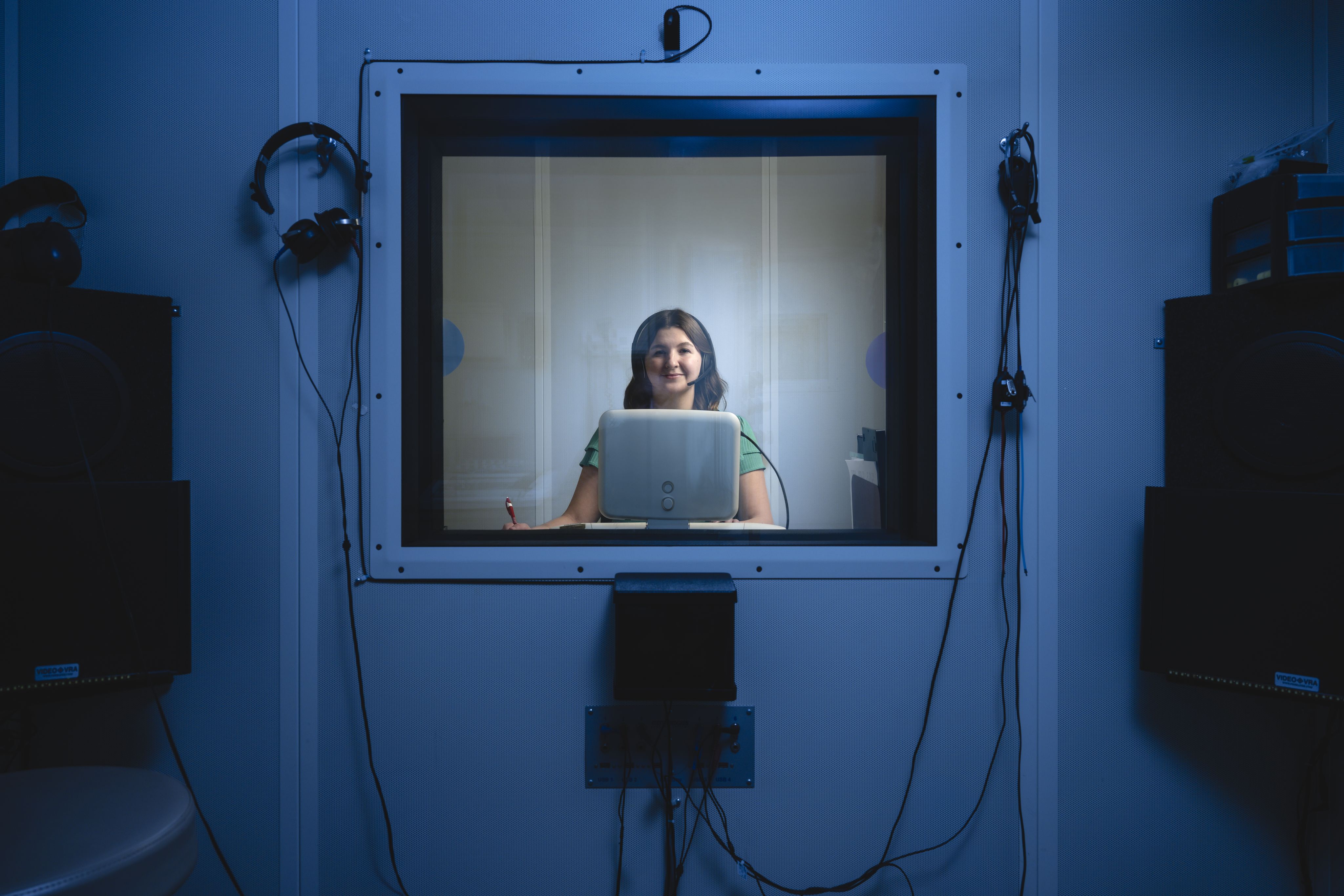
Can one phone call change the course of a life?
Emily Jones thinks so, and she wasn’t even on the call.
Jones (PFW’22), a fourth-year student in the doctor of audiology program in Purdue’s Department of Speech, Language, and Hearing Sciences, was born with profound hearing loss. At 18 months old, she was among the first children in the United States to receive a cochlear implant. Emily and her twin brother, Ethan, were born in June 1999, one year before the state of Indiana standardized hearing screening examinations for newborns.
“Because Emily’s a twin, I picked up on the fact that she was missing developmental milestones when I otherwise might not have noticed as quickly,” says Emily’s mother, Tammy. “When Ethan started babbling at around seven months and Emily didn’t, I became concerned.”
The pediatrician told Tammy not to worry. Some children take a bit more time to develop. But when Emily struggled to bond with her parents and began withdrawing from the family, their concerns only grew.
“I tried to teach her to say Mama and Dada,” Tammy says. “She would move her mouth to mimic mine, but no noise came out.”
One day, Tammy stood behind her daughter banging pots and pans. Emily didn’t react.
The family was referred to Riley Hospital for Children for testing. An audiologist conducted auditory brainstem response (ABR) testing, a noninvasive diagnostic procedure used to assess hearing sensitivity and identify hearing loss. The family then consulted with Richard Miyamoto, a cochlear implant surgeon and now professor emeritus of otolaryngology at Indiana University School of Medicine.
“He told us Emily’s ABR had flat lines in both ears,” Tammy says. “He never used the word deaf. I only asked one question: ‘Will she ever be able to hear?’”
His response: “I think so.”
A Turning Point
Once the Joneses accepted their daughter had bilateral profound hearing loss, they began researching options for her care. A representative from the Indiana School for the Deaf called, encouraging them to enroll Emily once she was ready for pre-K. That would mean separating the family, with Emily and Tammy moving to Indianapolis. It would also require Emily to learn American Sign Language and communicate in a different language than her family and their close-knit rural community.
At Riley, Miyamoto was a trailblazer for cochlear implants in children, which had just been approved for 12-month-olds. The implants require surgical intervention, and the long-term effects of early implantation were not yet known.
“This was before the internet was widespread,” Tammy says. “I went to the public library to research cochlear implants, but it was very overwhelming.”
That’s when Tammy would make the call she describes as “the most important call I’ve ever made in my life.”
Lata Krishnan (PhD HHS’08), now a clinical professor emerita of speech, language, and hearing sciences, had only been director of the Purdue Audiology Clinic for a few months when she picked up the phone.
“Tammy shared that Emily had just been diagnosed with profound hearing loss, and they didn’t know what to do,” Lata says. “I listened to her concerns, explained the differences between cochlear implantation and learning sign language, and encouraged her to make the decision that would be best for her child and her family.”
The two hours they spent on the phone together brought clarity to Tammy. Lata provided enough information for Emily’s parents to make an educated choice.
“She honestly and unbiasedly answered every question I asked,” Tammy says. “After I spoke with her, I took a deep breath and finally knew everything was going to be okay.”
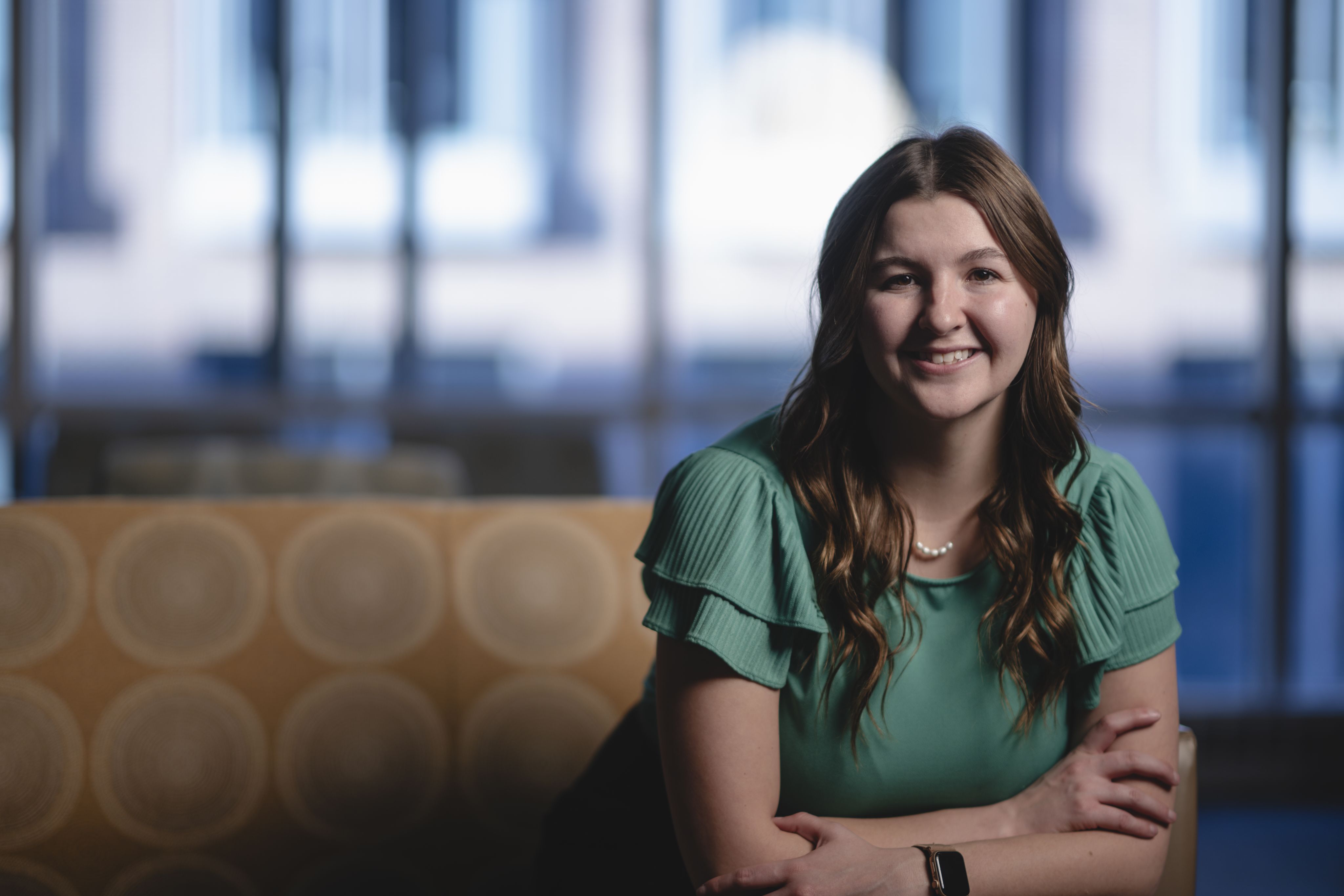
A Dream Fulfilled
Emily grew up in the small community of Monon, Indiana, which has a population of just 2,000. In a town where everyone knew her story, she didn’t face much teasing about her cochlear implant.
Her public school teachers were supportive and provided accommodations, including giving her preferential seating so she could read lips; using dehumidifiers in the classroom to extend the life of her sound processor; and spraying her down with static guard to minimize damage to the implant from static electricity before she went out on the playground.
“On the day of Emily’s cochlear implant surgery, I remember saying that if something happened to her because of this surgery, I would never, ever forgive myself because it is totally elective,” Tammy says. “Even with implanting at 18 months, the audiologists cautioned us that her speech could still be affected, and she might never understand music.”
But Emily flourished. She won an oral spelling bee in fourth grade. She played two musical instruments and excelled in choir. She was a three-sport athlete in high school and a member of the National Honor Society. She was elected homecoming queen and prom queen—all while upgrading to new external sound processors as technology evolved. She’s now on her sixth external device. The internal component that was implanted when Emily was an infant was designed to last a lifetime, although she could need another surgery if the electrodes begin to fail.
“I’m grateful for the decision my parents made for me, even though there have been times when I’ve felt like I straddle the deaf and hearing worlds,” Emily says. “I don’t identify as capital-D Deaf, which is the Deaf community that shares a culture and traditions centered around experiences of deafness and using sign language. But I do identify as lowercase deaf in the medical sense, because I do have hearing loss although I use spoken language.”
As she grew older, Emily discovered she wanted to share her story with others. A 10-year member of 4-H, she was crowned Miss White County 4-H Queen in 2019 while she was a sophomore at Purdue Fort Wayne.
“I advocated for people with disabilities as part of my platform,” Emily says. “I met a seventh-grade girl who also had a cochlear implant, and we’re still in touch. That’s when I realized that my story could inspire others.”
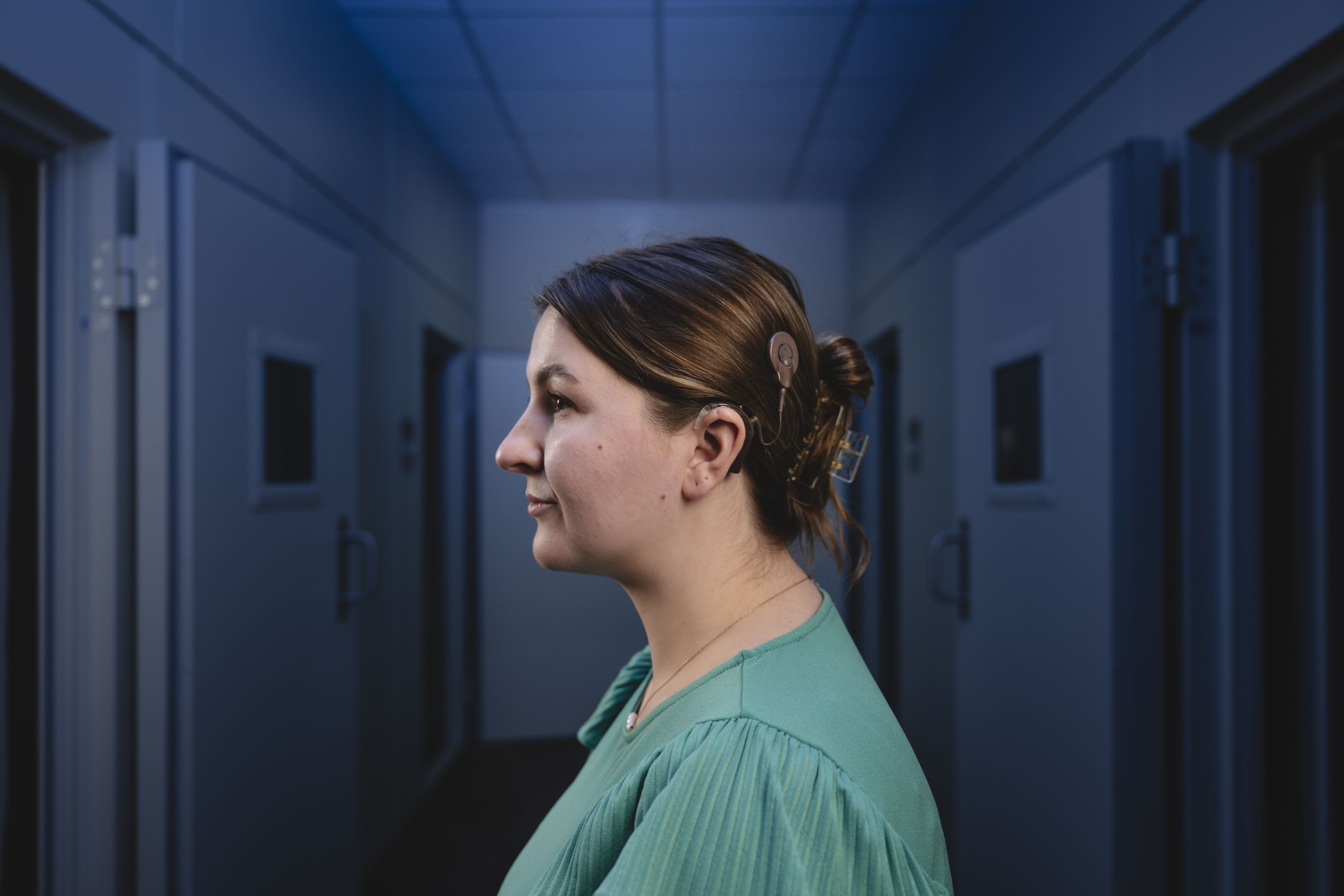
When Emily applied to the AuD program at Purdue, she had a virtual interview with Ravi Krishnan, professor of speech, language, and hearing sciences—and husband of Lata Krishnan. Ravi called his wife into the room, and she and Emily enjoyed a brief reunion of sorts, even though it was the first time they had met.
“After speaking with Tammy on the phone in 2000, I learned that Emily was participating in the Purdue auditory rehabilitation therapy program,” Lata says. “The last thing I knew was that she had enrolled in kindergarten at her local school and was doing well. It was a wonderful surprise to learn that she would become a student in Purdue’s AuD program.”
Emily was the first student in the Purdue AuD program with a cochlear implant, and she’s since been joined by another. Even though her hearing loss may not be initially apparent, Emily uses accommodations every day.
She prefers to sit at the front of the classroom—understanding speech is easier when Emily can see the speaker’s lips. Her boyfriend recently helped her test an amplification device when the couple attended an Indiana Pacers game. When he spoke into the microphone remotely connected to her cochlear implant, she could hear him clearly over the crowd noise.
Emily notified her local fire department that she sleeps without her cochlear implant. Her fire alarm flashes brightly, and she’s trained her golden retriever to alert her to noises, such as someone knocking at the door.
“Sometimes I walk around my apartment with my implant off because listening can be exhausting,” Emily says. “I can get listening fatigue very badly, especially after a full day of classes and clinics.”
When she’s working with clients in Purdue’s M.D. Steer Speech, Language, and Hearing Clinics, Emily intentionally wears her hair up so that her cochlear implant is visible. It’s important to her that others with hearing loss see that she understands what they are going through.
“My cochlear implant is a conversation opener,” Emily says. “There have been times when a child I’m working with will notice it and turn to their parent or grandparent to say, ‘Do you see what she has?’ I can help debunk misconceptions about what it means to live with a cochlear implant. It’s not a cure, but it is a tool that helps me hear better.”
In the fall of 2023, Lata Krishnan returned to campus to cover clinics for a colleague who was on maternity leave. For Emily, working with Lata felt like a full-circle moment.
“She helped my parents through this journey, and here I am, 25 years later,” Emily says. “Dr. Krishnan took time out of her day to speak with my mother at a time when she felt scared and uncertain. The fact that Dr. Krishnan was willing to listen helped my parents feel more confident about their choice.”
As she embarks on her fourth-year audiology externship at Riley this summer, Emily will be the one providing information and support to families as they make decisions on how to navigate a diagnosis of hearing loss.
“My daughter amazes me every single day,” Tammy says. “The path she’s chosen—I couldn’t be prouder. When she was first diagnosed, I used to ask, Why? Why does she have to struggle? Now I know that this was her journey. She’s right where she’s supposed to be.”

Boilermakers are always reaching further—persistently pursuing the next giant leap.
Through “Victories & Heroes: Your Campaign for Purdue,” the university’s largest-ever fundraising campaign, we celebrate every victory and hero knowing that, together, we are serving the common good.
Who is your Purdue hero?
If you know a Boilermaker who has made an impact, we want to hear more!
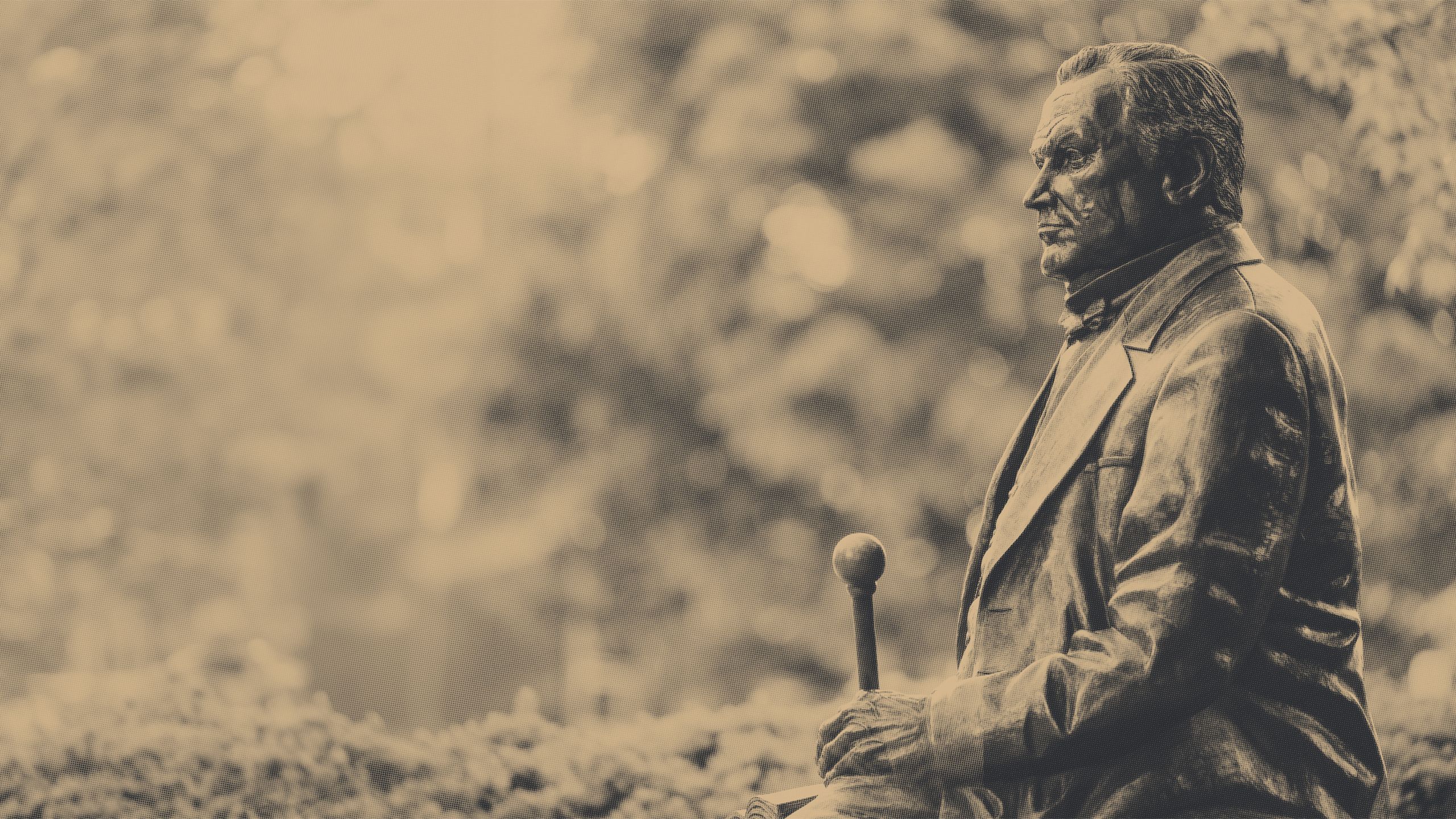
Boilermakers are always reaching further—persistently pursuing the next giant leap.
Through Victories & Heroes: Your Campaign for Purdue, the university’s largest-ever fundraising campaign, we celebrate every victory and hero knowing that, together, we are serving the common good.
Who is your Purdue hero?
If you know a Boilermaker who has made an impact, we want to hear more!



